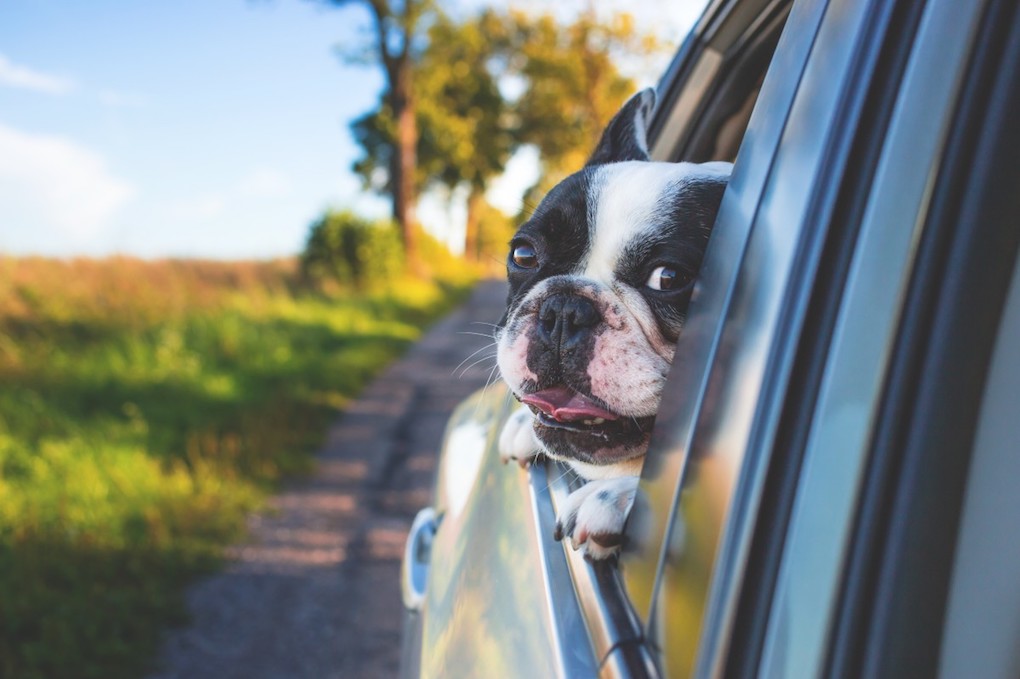We are animal lovers, and there are few worse feelings than traveling to somewhere sunny, while your animal friend is at home and missing you. For many, it is not practical to bring their pets, and for others it is tempting, but their furry pal might not be trained enough for a hotel, road trip, or on a plane. Here we will offer some pet travel tips to help you determine if you and your pet are ready to travel together, or should you just not.
Flying with your pet. Service animals fly free on U.S. airlines, but bringing a non-service dog or cat will cost you. Be sure to check your airline’s pet policy and make reservations beforehand. Rates range from $75 up to $225 each way, depending on pet weight and size. Also know that some animals can only fly in cargo, and not with you in the cabin. Flights might restrict pets during warm or cold days, and in case of emergency, carry your pet’s vaccination records.

Some destinations quarantine pets on arrival so check ahead, and beware that dogs with bad reputations and flat faced breeds like Pitbulls, bulldogs and Persian cats can’t fly. No one knows your pet better than you. If your pet is not of good health or of a good temperament, better leave them at home. Primates are also banned on most flights unless they are registered service animals.
We’re going for a long ride pal. Taking your pet to the gas station with you is a lot different than driving in the car with them for hours or days. You both will get the hang of it, but it will take some getting used to. Again, if you think your pet’s temperament is not great for a long drive, or you won’t be able to pay them attention, leave them at home.

While driving, pets should not be allowed to roam the car. The front seat, or holding them in your lap can be dangerous too. If the driver is forced to slam on the brakes, your precious could be hurt severely. Secure them in a crate with a seatbelt, or us another pet restraint to prevent injuries.
During your drive, keep them inside the window, and never ride them in the back of a pickup. Excess air in their lungs or road debris might make them ill, and full sun or cold could do worse. Be prepared to have a human pal ride along with you so that you do not have to leave your pet alone in a hot car too. Even at 72° outside, cars heat up to 116° and beyond in an hour. Also bring along a pet bowl and water to keep your little buddy hydrated along the way.

Not the curtains Rex. Your dog might have been house trained since a puppy, but being in an new place might take her out of her element. That smarty-cat of yours might also love the upholstered chair for a scratching post. These pet behaviors can be embarrassing and expensive at a hotel, so spare yourself some grief. Check to be sure your destination hotel accepts pets. Making a pet reservation ensures that pets are accepted, and you may be able to get accommodations that suit your pet better.
Location is important too, so check out your room for hazards before your pet. A ground floor room will keep downstairs guests from hearing your pet frolic, and a room away from busy areas can help keep a sensitive dog from barking incessantly. Bring along a crate to prevent your pet from running out an open door, having accidents, or destroying property. In addition, consider leaving behind tattered toys and treats that could cause choking.

Finally, be courteous to others with your pet in all situations. Though you love your pet, others may not. Shedding animals may flare someone’s allergies, there may be a trauma, or your animal might make a mess in a common area. When stopping on road trips, pick up behind your dog, and leave a phone number in situations where your pet might be without guidance. Be sure to know where the local veterinarian is at your destination, and that his or her dog tags are current. Aside from that, resume enjoying your little buddy’s company. They will appreciate having a good trip with you as well.


